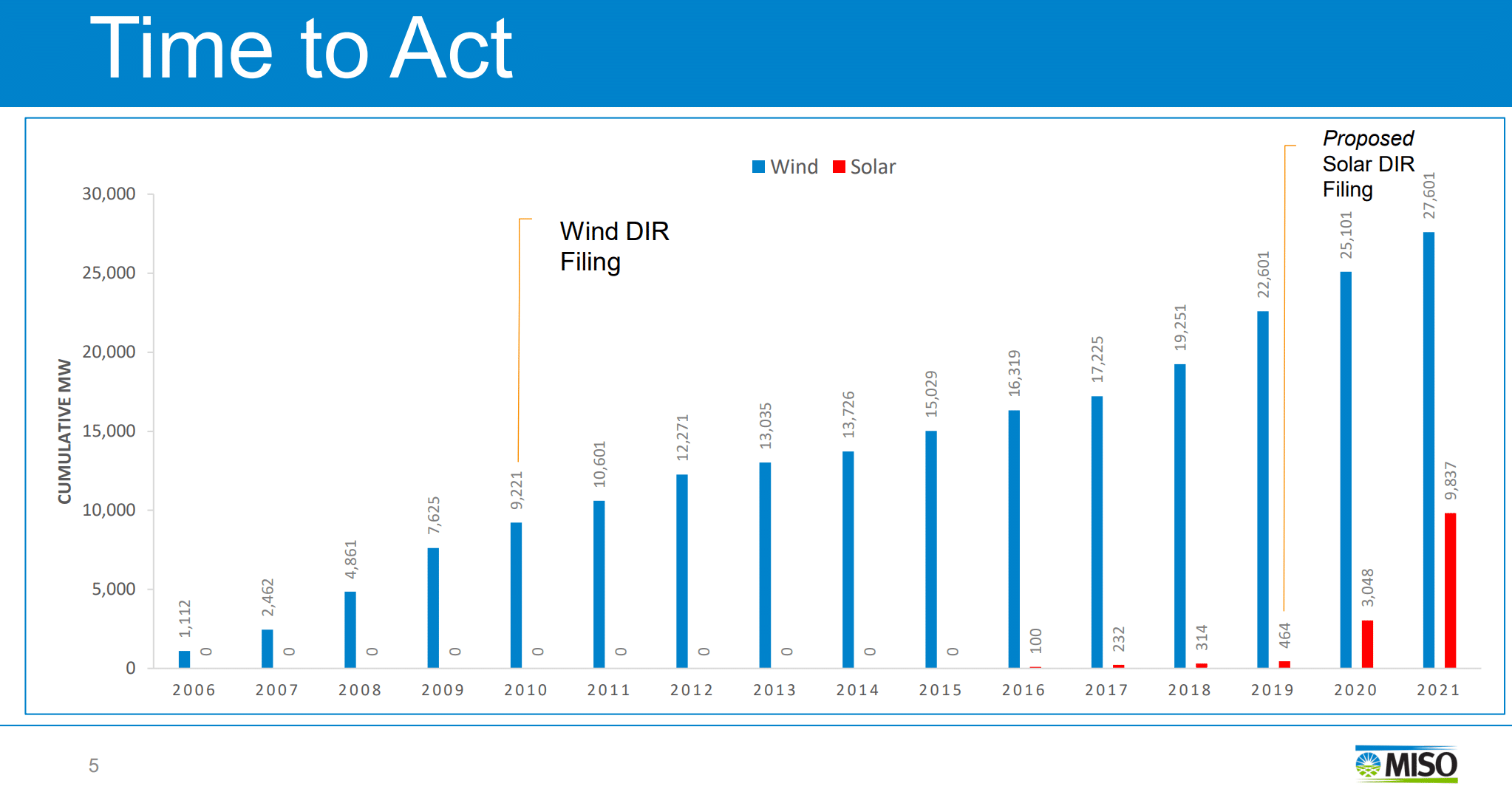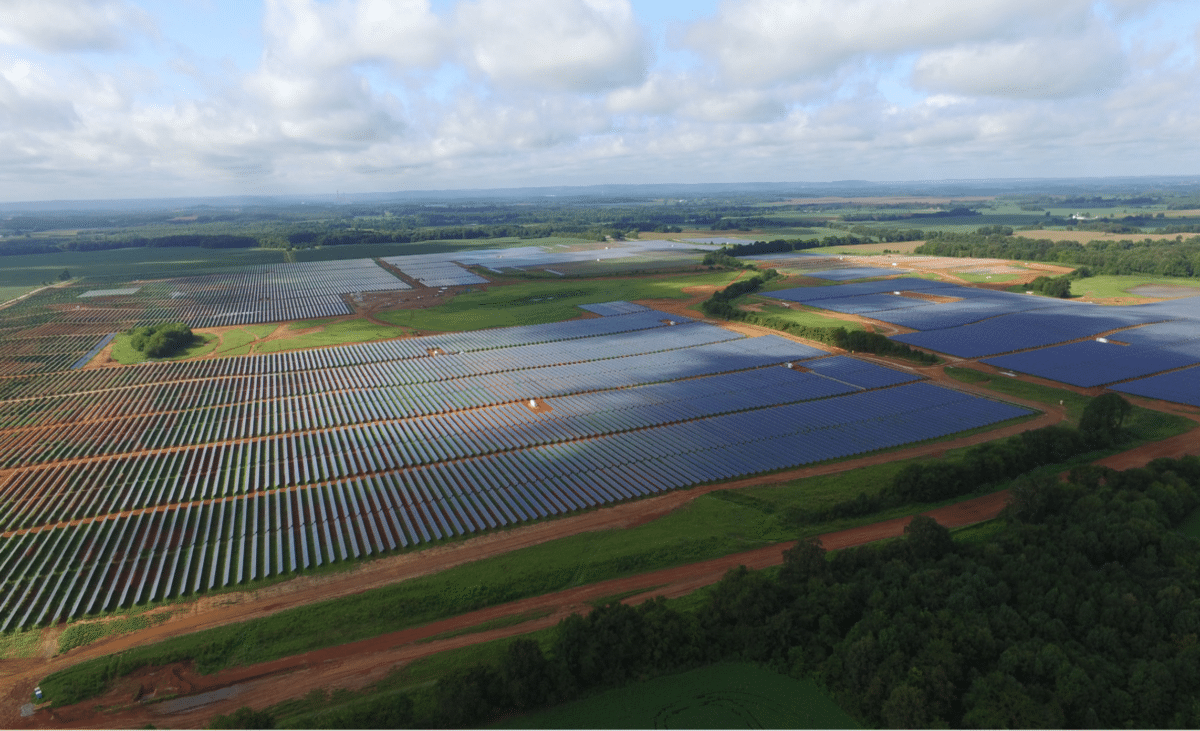My most favorite response to those who say things like, “what happens when the sun sets” is to say – ‘The sun never sets, it is your vision that is lacking.” While some of the ideas to make this happen may be further out – a global high voltage direct current (HVDC) network and space based solar power satellites are technically possible – there are others, like a 60% capacity factor solar+storage facility, a US powered 80% solar+wind+12 hours of energy storage and highly predictable solar electricity generation production, that are tantalizingly close.
The Midcontinent Independent System Operator (MISO) has published an internal presentation, Solar as Dispatchable Intermittent Resource (pdf), whose purpose is discussing “a proposal to require future solar to register as a dispatchable intermittent resources”. MISO notes that significant solar growth is projected in the coming years, and that the same operations and market challenges that led to wind plants being moved into this category are expected for solar power generation.
MISO is currently seeking stakeholder feedback by September 26, with a goal to finalize the proposal in November 2019, and to file an updated tariff the following month.

MISO says that over 9 GWac of solar projects have, or are close to having, generator interconnection agreement (GIA) in place. The ISO also notes that 52 GWac of capacity is in the early stages of the interconnection study process (this roughly aligns with pv magazine USA data on the topic).
The grid operator’s presentation suggests benefits as being increased operation reliability, higher market efficiency, and more price transparency. The group suggests confidence in the program due to the success of wind generation facilities transitioning toward DIR in 2010. They also note that the Southwest Power Pool (SPP) recently had a similar tariff approved by the Federal Energy Regulatory Commission (FERC).
And while pv magazine USA doesn’t have industry experience with this knowledge, a quick search suggested that immediately after wind was reclassified into MISO as a DIR, curtailment fell from 2.7 percent in 2011 to 0.9 percent in 2012 (pdf), and that wind as a DIR within MISO is a still evolving topic – as a most recent report on the subject found that certain groups consistently over projected wind production, leading to chronic energy dispatch forecast errors.
An unrelated bonus link for the curious among us: the ~505 day MISO Generator Interconnection Process (pdf) that this author found while rummaging about the tubes for this article.
This content is protected by copyright and may not be reused. If you want to cooperate with us and would like to reuse some of our content, please contact: editors@pv-magazine.com.








This may have major consequences on project financing for MISO projects since P50 and P90s are used to create output certainty. Now, with potential curtailment for Tx issues, there is a break in the link of weather derivatives to hedge finance risks. This didn’t show up as prominently for wind due to differences in PTC vs. ITC fundamentals.